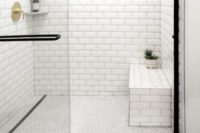
CaesarStone quartz countertops were custom-made for the new location of the Good Housekeeping Research Institute in Manhattan.
NEW YORK, NY - TheGood HousekeepingResearch Institute recently moved in to its new home in the Hearst Tower in Midtown Manhattan, and 2,800 square feet of brilliant white CaesarStone quartz countertops were chosen to create a sleek fresh look for the age-old institution.
Established in 1900, the Institute is the consumer product evaluation laboratory ofGood Housekeepingmagazine and was developed “for the purpose of improving the lives of consumers and their families through education and product development,” statesGood Housekeeping’s Web site.
The Institute has departments specializing in engineering, chemistry, food, food appliances, nutrition, beauty products, home care and textiles. It reviews all advertisements submitted to the magazine; only those that it finds acceptable are published, and their products become eligible to earn the “Good HousekeepingSeal.”
“The Institute moved in [to the building] in early August,” said Sara Rad, Director of Brand Development. “It was an opportunity to modernize the facility.”
CaesarStone worked closely withGood Housekeepingto create a customized white color for the Institute’s countertops as well as some of the magazine’s offices and employees’ cafeteria. “It’s beautiful,” said Rad. “It has a white sleek look.”
Rad explained that the material had to first meet the standards of theGood HousekeepingResearch Institute before it could be approved for the design. “Our engineers had to have it go through the rigor of our testing,” she said. “There were no problems with CaesarStone’s evaluation.”

Arik Tendler, president of CaesarStone, (pictured second from left) worked closely with members of Good Housekeeping’s staff to develop just the right shade for the countertops.
“CaesarStone was selected over the other countertop materials for its ability to meet the specific demands of the designer and to provide an extremely homogeneous material,” said Pat Haegele, publisher ofGood Housekeepingmagazine. “Our choice was critical since theGood HousekeepingResearch Institute is not a typical kitchen with limited countertops, rather the surfaces are expansive and very prominent. The space is not only a highly functioning laboratory environment, but also a tour destination for readers, consumers and advertisers.”
According to Arik Tendler, president of CaesarStone, it took about three months of sending samples and evaluations back and forth before final approval was given on the customized color. “We had to maintain the quality [of the material] while coming up with the right shade of white,” he said.
In total, CaesarStone USA supplied about 200 slabs of CaesarStone forGood Housekeeping’s new location. Approximately 90% of the slabs were used for the interior design of the Institute.
“TheGood Housekeepingproject was a very big deal for us,” said Tendler. “I am pleased that we can share a piece of American tradition, taking part in educating readers across the U.S.”
.jpg?height=200&t=1667317050&width=200)
